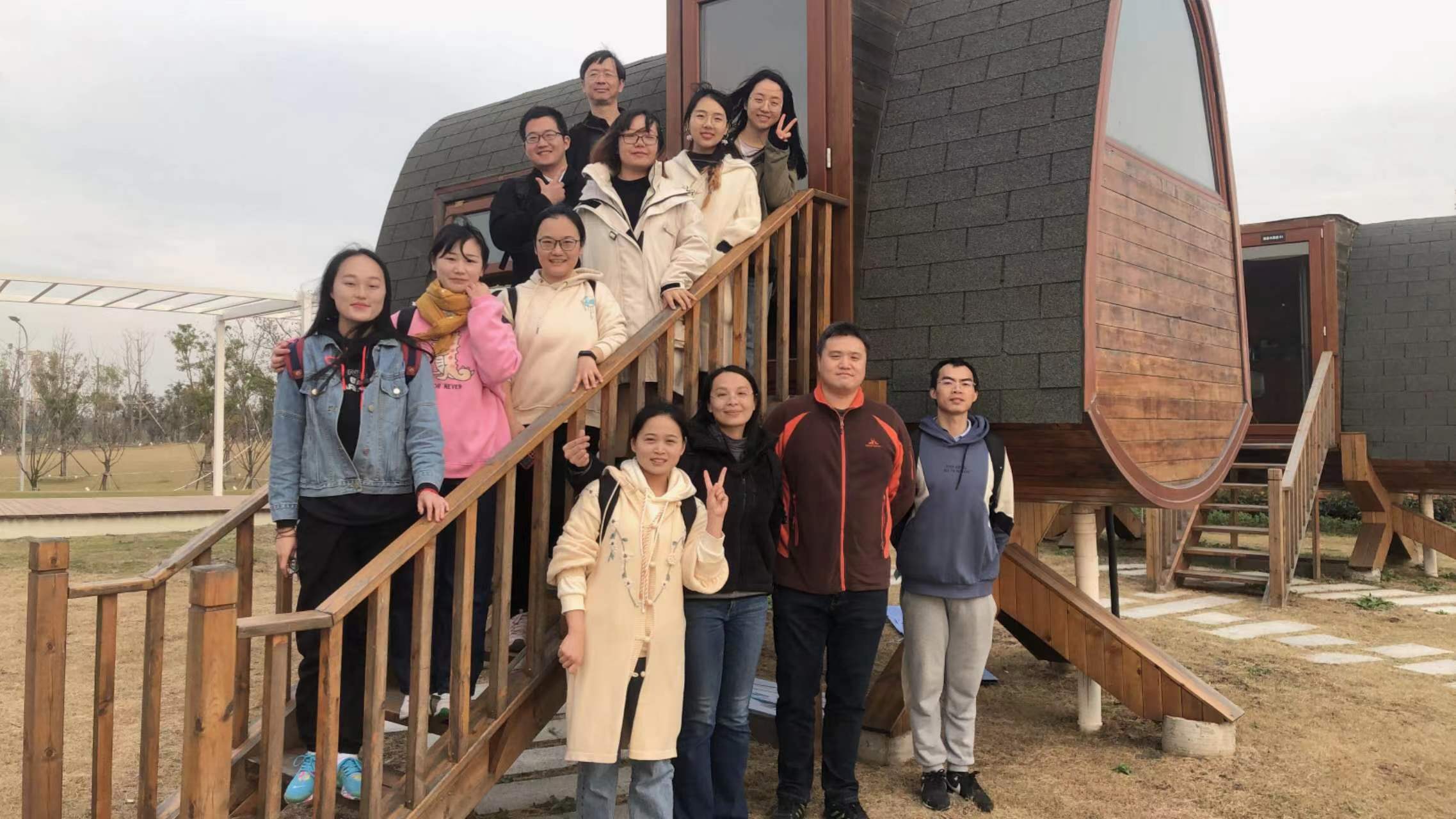

New method explains human ancestors were at high risk of extinction The central formulation of the new method for estimating group history (left).
Did our ancestors almost become extinct?
The last 1 million years are considered to be a critical period in the evolution of modern humans (late Homo sapiens). But related fossil records are extremely scarce, and there is no possibility of extracting DNA or fragments. So how do we decipher the key secret of human evolution?
At around 2 a.m. on September 1, Beijing time, a research paper published online in the international academic journal Science showed that Chinese scientists have created a new theory and method of population genetics and computational biology, which can be passed Analyze the genomes of modern populations to study the group history of ancient humans millions of years ago.
The name of this innovative theory is "Fast Minimal Time Ancestry" (FitCoal). On the afternoon of August 31, at a press conference held in Shanghai, Li Lin, an academician of the Chinese Academy of Sciences, transliterated this theory into "Feideku", which is interesting and easy to remember.
The first discovery using this theoretical method is amazing: 930,000 years ago, the size of the human ancestor group decreased sharply, losing about 98.7% of the members in a short period of time, almost extinct. Over a period of 117,000 years, the average number of adults was only 1,280. This is the first time that people have found a serious group bottleneck event.
The title of the paper is Genomic inference of a severe human bottleneck during the Early to Middle Pleistocene transition. The corresponding authors are Li Haipeng, a researcher at the Shanghai Institute of Nutrition and Health, Chinese Academy of Sciences, and Pan Yixuan, a professor at the Institute of Brain Functional Genomics at East China Normal University.
"This new discovery opens up a new field of study in human evolution. Because it raises many questions, such as where these surviving individuals lived, how they overcame catastrophic climate change, and whether natural selection during bottleneck events accelerated the human brain." evolution," Pan Yixuan said.
"These discoveries are just the beginning. The future goal is to use this knowledge to paint a more complete picture of human evolution during the transitional period from the Early Pleistocene to the Middle Pleistocene, which in turn will continue to unravel the mystery of the evolution of early human ancestors," Li Haipeng said. .

"A high-precision sniper rifle": accurate to every day in a million years
Using the genome data of several modern humans, it is possible to estimate the population size of human ancestors hundreds of thousands of years ago. The FitCoal theoretical method has been exclaimed as "powerful". But originally, it was not created to study the group history of humanity.
Li Haipeng and Pan Yixuan said that they originally hoped to establish new theories or methods to understand the history of different biological groups such as plants, so as to understand the origin and evolution of these organisms. After studying fruit flies, they decided to explore the history of human populations, and more related research emerged.
In fact, almost all organisms driven by genes may become the objects covered by this theory. For example, bacteria, viruses, and even tumor cells in cancer patients can be "imagined" as a group , and this theory can be used for calculations and calculations. Evaluate.
Li Haipeng said that the previously known human group history is mostly limited to 100,000 years—the process of human beings coming out of Africa. The 2022 Nobel Prize in Physiology or Medicine was awarded to Swedish biologist and evolutionary geneticist Svante Pääbo for his "contributions to the study of extinct ancient human genomes and human evolution." Pabo extracted ancient DNA from Neanderthal fossils from 38,000 to 45,000 years ago, sequenced and studied them.
"But we need to understand the history of human groups one million years ago." Li Haipeng said, it is like shooting a target 100 meters away with a pistol, but now the target has moved 1,000 meters away or even further. "At this time you must There must be a sniper rifle, and a high-precision sniper rifle."
Through simple steps - extracting genetic samples, sequencing, and then based on the FitCoal theory, researchers can quickly estimate the population history - the number of life groups on "slices" at different times within a certain time range, which is like quickly establishing a "population" Census” results archive. Even relevant genomic data can be downloaded from public databases, so even the step of "extracting genetic samples and sequencing" can be skipped.
"Through FitCoal theory, we can obtain an analytical solution corresponding to the mathematical expectation value of each parameter of the mutation spectrum... and can perform accurate calculations. This method can track daily conditions within a time range of 1 million years. Also That is to say, it can be accurate to every day in the time range of millions of years ." Li Haipeng said.
Through a large number of computer simulations and calculations, the researchers found that compared with the three methods currently commonly used in the field: PSMC, Stairway Plot and SMC++, the FitCoal theory can accurately estimate the history of human groups within millions of years, with a smaller confidence interval.
At present, FitCoal has been developed by them as a software tool, which is placed on the webpage of the laboratory for researchers all over the world to download and use.
Li Haipeng and Pan Yixuan described the process of creating the FitCoal theory as an adventure.
On the afternoon of August 31, they told The Paper, “For about a year, we worked on coding and planning every day. However, we hit a wall and the work became disorganized. At Yixuan’s suggestion, we restarted The start. The second try wasn't perfect. By the third, with the help of another team member, Hao Ziqian, we were on track."
In 2013, Li Haipeng began to cooperate with Pan Yixuan to research and build the FitCoal theory. By the time the paper is officially published, it will be 10 years later in 2023.
"This is a story about buying a casket and hiding a pearl, and it is also a theoretical paper that has been rarely published in CNS journals in recent years." Professor Wu Zhongyi, an evolutionary biology and geneticist, professor and doctoral supervisor at the School of Life Sciences at Sun Yat-sen University, commented on this paper, "This The theoretical framework of this paper is all in the (paper) appendix."
Liu Xiaoming, a population genetics and human geneticist and professor at the University of South Florida, commented that FitCoal is the most accurate method to date to estimate the history of effective population size . Moreover, this method is based on mutation spectrum data, has a series of advantages such as strong adaptability of data form and fast calculation speed, and has a very wide range of application prospects.
Yang Jian, head of the Statistical Genetics Laboratory of Westlake University and professor of the School of Life Sciences, believes that FitCoal theory has achieved high-precision time backtracking on a large time scale of millions of years, and can accurately estimate recent and ancient group history at the same time. .
Group bottleneck: almost extinct human ancestors, only 1280 people survived
Based on the FitCoal theory, the researchers calculated based on genome data that the population of the human ancestor group dropped sharply 930,000 years ago. Over a period of 117,000 years, the average number of adults was only 1,280.
Based on two sets of independent data from 1000 Genome and HGDP-CEPH, the estimates of the size of this group are almost identical, 1270 and 1300, respectively.
Taking into account the natural fluctuations in population size, the aforementioned average estimates represent an upper bound on the minimum population size during the ancient population bottleneck.
Subsequently, the researchers used two southern African groups from the HGDP-CEPH data set for further verification. Although the sample size was only 6 and 8 individuals, FitCoal still detected the aforementioned ancient group bottleneck.
The results of the re-sampling of African population samples show that FitCoal can detect the aforementioned ancient population bottlenecks with only the genomes of three African individuals, further demonstrating that theoretical innovations in computational biology have made this discovery possible.
"The fact that FitCoal can even detect ancient severe population bottleneck events with just a few sequences is a breakthrough ." said the author of the aforementioned paper, a theoretical population geneticist at the University of Texas Health Science Center in Houston, USA. Fu Yunxin said.
In addition, the aforementioned serious population bottleneck events correspond to the missing link in the fossils of African human ancestors, the disappearance of the African Homo erectus fossils, the formation of new ancient human species, and the fusion stage of the two ancient human chromosome 2. This further illustrates that the aforementioned severe population bottleneck has a key impact on human evolution.
Researchers said that the aforementioned group bottleneck event of sharp population reduction reduced the genetic diversity of modern populations by 65.85%, which had a profound impact on human life and health.
The researchers speculate that this population bottleneck event may have been caused by dramatic climate change.
But 117,000 years later, around 813,000 years ago, the group of human ancestors was found to recover rapidly, with a 20-fold increase in group size. Archaeological evidence found in Israel from about 790,000 years ago suggests that the use of fire may have been partly responsible for the increase in population. Other factors, such as climate change, may also be behind the rapid population recovery.

Li Haipeng, a researcher at the Shanghai Institute of Nutrition and Health, Chinese Academy of Sciences, and Pan Yixuan, a professor at the Institute of Brain Functional Genomics at East China Normal University, are a joint research team.
Typical cold bench: Preprints foster collaboration, computational biology guards health
At the press conference, Li Haipeng mentioned a detail: In May 2021, they published the first version of the paper on the preprint website bioRxiv and began to provide downloads of the FitCoal software to the world. Then I received an email from Dr. Fabio Di Vincenzo from the University of Florence, Italy, and the two parties established contact and began cooperation.
Fabio Di Vincenzo is now the fourth named author of the aforementioned newly published paper.
Pan Yixuan said that they didn't even meet their foreign collaborators at first, they just communicated slowly through emails. This research project is very long, so long that she has forgotten when she started writing the program.
Pan Yixuan said that the first bottleneck period in the research process was when the FitCoal theory was created. Because we have to stand on the "shoulders" of past theories and formulas, adjust parameters, etc.; the second bottleneck period is to type the mathematically derived theoretical functions into code; in this process, we "hit the wall" three times. The first "hitting the wall" lasts the longest, and each subsequent "hitting the wall" takes 1-2 years as a unit.
The author of the aforementioned paper, Dr. Hao Ziqian, also told The Paper that one of the difficulties he encountered was that “the project cycle is extremely long. When doing it, sometimes I really don’t know if it can be done. It’s really difficult to persist. Easy. So we also hope that basic research will continue to receive attention and support, especially for teams that need to sit on the bench and concentrate on research for a long time."
Li Lin said that breakthrough basic research brings us the expansion of cognitive boundaries. This is a very basic scientific research. "For work like this, if we have three days and two days of assessment, it will definitely depend on whether you can publish an article. He may not be able to complete these 10 years of work (topic), and... ... If it can't be published, is this job meaningless? " " This is a typical cold bench (research) ."
Li Lin said, "Basic research in life sciences is a very important part of our basic research on mankind." "Perhaps we will never be able to fully understand the profound analysis of the nature of life, but we will continue to get closer to the understanding of the nature of life." Recognition. Not only will it produce breakthroughs in science, but it will certainly benefit mankind."
Talking about the implications for the future, Pan Yixuan said, "The discovery of severe group bottleneck events in ancient humans shows that no matter what our background, we are all from the same origin. Our ancestors were almost extinct and had to unite to survive. This reminds us that today , in the face of an uncertain future, we should unite and work as a team globally."
In addition to studying the history of human groups, Li Haipeng said that FitCoal theory may also be applied to research in areas such as revealing the overall susceptibility of modern populations to diabetes. "What kind of person can survive at that time (severe bottleneck event)? Is he already genetically different? In other words, the survivors can use or store energy more efficiently. So, unfortunately, You may also be more susceptible to diabetes. In terms of diabetes research, some researchers are looking for differences between individuals in the population, but we hope to choose a different path and conduct research based on the risk of the disease as a whole population, moving forward. Explore ways to prevent people from suffering from diabetes. Focusing on big data and using computational biology research to improve the life and health of the people is a worthy direction for us to work hard in the future."
